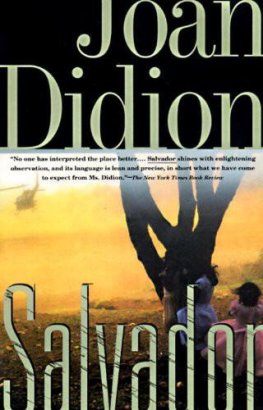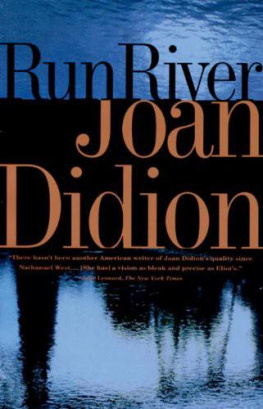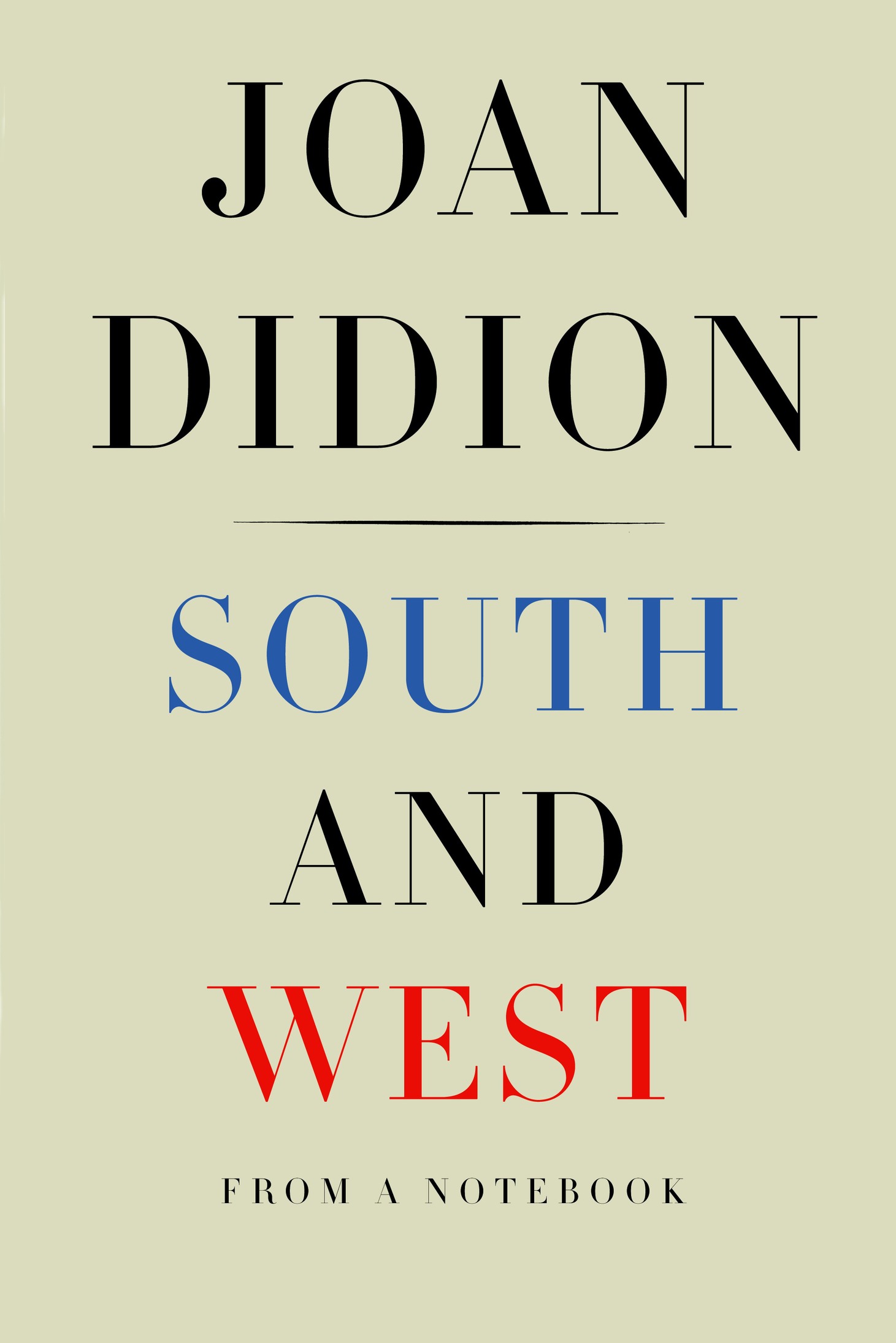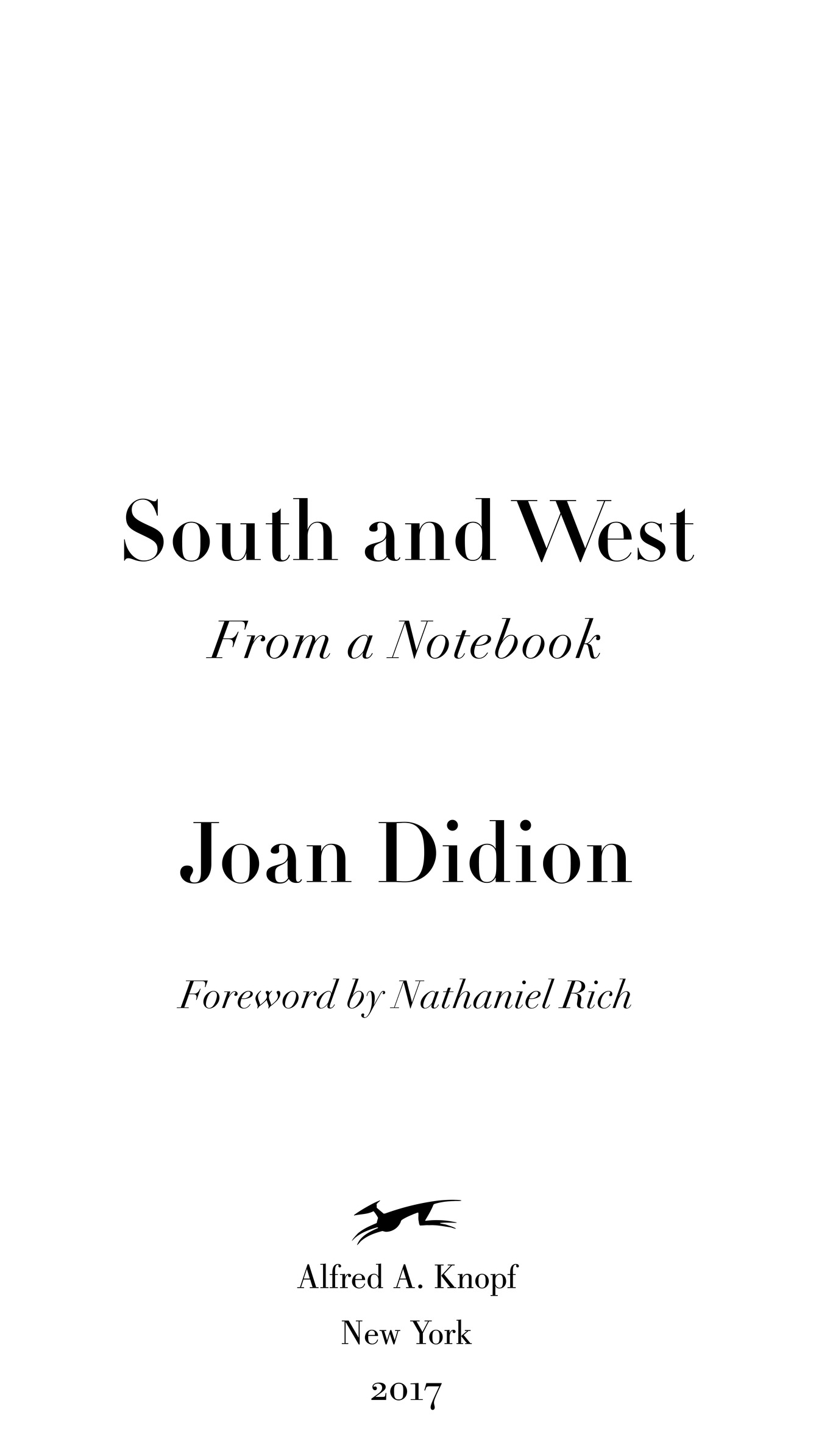THIS IS A BORZOI BOOK PUBLISHED BY ALFRED A. KNOPF
All rights reserved. Published in the United States by Alfred A. Knopf, a division of Penguin Random House LLC, New York, and distributed in Canada by Random House of Canada, a division of Penguin Random House Limited, Toronto.
Knopf, Borzoi Books, and the colophon are registered trademarks of Penguin Random House LLC.
Foreword
T he idea was to start in New Orleans and from there we had no plan.
This has been the idea of many people who have come to New Orleans. It was the idea of the French explorer Ren-Robert Cavelier, Sieur de La Salle, who in 1684 set out to establish a city near the base of the Mississippi River, only to fail to find the rivers mouth from the Gulf of Mexico and, after three years, to be murdered by his mutinous crew. It was the idea of William Faulkner, who quit his job as postmaster at the University of Mississippi and moved to New Orleans because he despised taking orders, and of Tennessee Williams, who wrote in his diary, Here surely is the place that I was made for if any place on this funny old world. One does not have to stay long to learn how easily plans in New Orleans, like its houses, become waterlogged and subside into the mud, breaking to pieces. This life, wrote Williams, shortly before returning to New York, is all disintegration.
Joan Didion explained her decision to visit the Gulf Coast in her 2006 Paris Review interview: I had a theory that if I could understand the South, I would understand something about California, because a lot of the California settlers came from the Border South. It is a counterintuitive theory, for the South and the West represent the poles of American experiencethe South drowning in its past, the West looking ahead to distant frontiers in a spirit of earnest, eternal optimism. The future always looks good in the golden land, Didion wrote in Some Dreamers of the Golden Dream, because no one remembers the past. In the South no one can forget it.
Didion toured the Gulf South for a month in the summer of 1970, making notes and recording conversations, but never completed a piece. She visited San Francisco in 1976 to cover the Patty Hearst trial for Rolling Stone, but found that she wanted mainly to write about her own childhood and the Wests conception of history. Didions notes, which surpass in elegance and clarity the finished prose of most other writers, are a fascinating record of this time. But they are also something more unsettling. Readers today will recognize, with some dismay and even horror, how much is familiar in these long-lost American portraits. Didion saw her era more clearly than anyone else, which is another way of saying that she was able to see the future.
South and West is, in one regard, the most revealing of Didions books. This might seem a far-fetched claim to make about an author who has written about her ancestry, her marriage, her health, and, with painful candor, her griefDidions readers are, after all, on familiar terms with the personal details of her life. But the writing itselfthe cool majesty of her prose, written as if from a great, even empyreal distance, elevating personal experience into universal revelationhas an immaculacy as intimidating as Chelsea porcelain. South and West offers for the first time a glimpse inside the factory walls.
For each piece she reported, Didion converted pages of loose-leaf notebooks into scrapbooks of material related to her theme. She inserted newspaper articles and other writers works, like C. Vann Woodwards The Search for Southern Identity, biographical summaries, lists of suggested themes, and overheard dialogue, which often seems taken from one of her novels. (I never been anyplace, says a Biloxi woman, I wanted to go.) In her notes we learn of her reporting tricks, which are less tricks than an intuitive genius for locating the people in a given community who will best reveal its character: the director of the local College of Cosmetology, the white owner of the black radio station, the bridal consultant of the largest department store. The notebooks also include transcriptions of her observations, which she typed at the end of each day. These notes represent an intermediate stage of writing, between shorthand and first draft, composed in an uncharacteristically casual, immediate style. There are sentences that are ideas for sentences, paragraphs that are ideas for scenes: The land looks rich, and many people from Birmingham, etc. (rich people) maintain places here to hunt. The country way in which he gave me names. The resolutely colorful, anecdotal quality of San Francisco history. The sense of sports being the opiate of the people. The sense of not being up to the landscape. The effect can be jarring, like seeing Grace Kelly photographed with her hair in rollers or hearing the demo tapes in which Brian Wilson experiments with alternative arrangements of Good Vibrations.
Yet even in its most casual iteration, Didions voice, with its sensitivity to the grotesqueries and vanities that dance beneath the skim of daily experience, is unmistakable. The New Orleans atmosphere never reflects light but sucks it in until random objects glow with a morbid luminescence. The audience dutifully watching Loving at the movie theater in Meridian gazes at the screen as if the movie were Czech. The rivers are always brown and still: A sense, she writes, of water moccasins. Didions implacable fatalism is at home in the South, particularly in New Orleans: Bananas would rot, and harbor tarantulas. Weather would come in on the radar, and be bad. Children would take fever and die.
She made her tour in a rental car but the road-trip aspect is barely commented upon; instead we have the surreal image of Didion swimming her way across the Gulf South through its motel pools. At the Edgewater Gulf Hotel pool in Biloxi the water smells of fish, at the Howard Johnsons in Meridian a child dries off in a Confederate-flag beach towel, at the Ramada Inn in Tuscaloosa everything seemed to be made of concrete, and damp, in Winfield the pool is filled with algae, at the Oxford Holiday Inn the broadcast of a radio station can be heard underwater, and at the St. Francis Motel in Birmingham, her bikini attracts excited comment from the bar. Lying poolside, she feels the euphoria of Interstate America: I could be in San Bernardino, or Phoenix, or outside Indianapolis, but these motels have the appearance of stage sets. They are American markers artificially planted in the brooding wildness of the Deep South, which in these notes resembles a foreign country as exotic as El Salvador, Vietnam, Granada, or the other tropics of morbidity and paranoia and fantasy to which she gravitated in her nonfiction and fiction.















